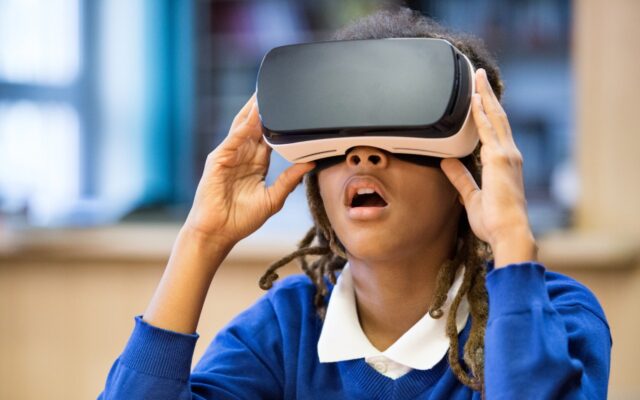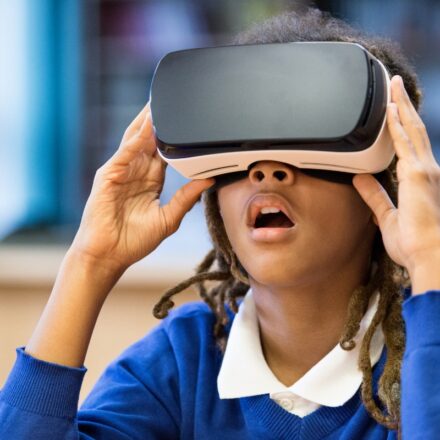The concept of the metaverse has gotten a lot of attention lately. While much of the chatter has been about this “brand new” thing, people who’ve followed augmented and virtual reality (AR/VR), immersive gaming, advanced graphic and even Coachella have seen advances in what’s possible for more than a decade.
What is new is the conversation around novel applications and investments; ways to connect with people, places and entertainment in an immersive, mixed-reality space that doesn’t hijack your senses with clunky goggles and finicky joysticks – think Star Trek holodeck versus stumbling around in VR headsets. At the center of it all is data – and a greater need for real-time computing for massive amounts of it.
What do The Matrix, Tupac Shakur, Roblox and Nortel have in common?
They’ve all been a part of the metaverse evolution.
In the 1980s, American-Canadian speculative fiction writer William Gibson coined the term ‘cyberspace’, which he described as the “mass consensual hallucination” of computer networks, and described concepts such as net consciousness, virtual interaction and “the matrix.” You may not have heard of Gibson, but you’re probably familiar with the 1999 film that drew inspiration for its title and basic story line from a trilogy of his works. Many credit The Matrix, and its heavy Artificial Intelligence (AI) themes, with the enormous growth of virtual environments in both video games and on the Internet. It was basically metaverse 1.0.
American rap artist Tupac Shakur was killed in 1996, but somehow shared the stage – and wowed a stunned audience — at Coachella 2012 with fellow musician Snoop Dogg. What looked like a 3D likeness of Shakur was actually a 2D image projected onto an angled piece of glass on the ground and then cast onto the stage. The hologram, and the lifelike experience it created, left concertgoers in awe.
About 15 years ago, former telecom giant Nortel created immersive communication experiences like spatial audio, telepresence and HD videoconferencing. I know this because my colleague John Roese, Dell Technologies’ global chief technology officer, helped lead the charge for them at the time.
Even earlier than that, around 2006, Roblox was born. One of its creators envisioned “a new category of human co-experience where people could play, learn and work together in digital worlds.” Fast forward 18 years and the online game has tens of millions of daily users, and is played by more than half of under-16 children in the U.S. The company recently released a spatial voice system that mimics talking to someone in person – the closer you get to someone, the louder their voice, and vice versa.
Social media platforms won’t rule the metaverse
In a recent interview with Business Insider, Roese said, “the metaverse is a concept we think is an inevitability because we’ve created small pockets of very deep and immersive digital experiences…But we haven’t been able to stitch it together in a way that allows people to move between it, to work across it.”
The term metaverse exploded after Facebook rebranded as Meta late last year. If you followed coverage of that announcement, you may have been lucky enough to catch #Icelandverse, the brilliant marketing campaign launched by Iceland in the weeks following.
While the immersive reality of the metaverse will allow us to “travel” to new places and engage with more people without having to board a plane, Iceland invited everyone to kick it old school and visit Iceland in person, promising “a revolutionary approach to connect our world … without being super weird.”
Metaverse may not be the best way to portray what’s coming
Metaverse essentially describes an alternative place or space – something distinct from reality. However, I think the path we are on has more to do with the mixing of the physical and digital in real-time to create truly immersive experiences.
The potential we see for the technologies that will enable these experiences cannot be contained – or produced or supported — in a single virtual “place” or “space.”
Rather, we’ll see a greater need for real-time computing across massive workloads that combine visual data, AI and machine learning. This will accelerate the decentralization of computing from hyperscale data centers to the world around us, including increasingly powerful PCs and Edge platforms to power these digital, immersive experiences.
That means we need the full weight of global connectivity, including 5G and the technology infrastructure behind it: a multi-cloud ecosystem comprised of public and private clouds at the Edge to make virtual reality, well, a reality. These technologies not only create the experience itself but also support the many applications that must exist in a mixed-reality world.
Social media platforms and hyper-scalers won’t pull this off on their own
It’s going to take an enormous digital village to build an open ecosystem to develop the technology and compute required to process massive data workloads at the Edge, and devices that can deliver rich visual experiences.
Data will be wildly decentralized. So, we’ll need powerful client devices (PCs with GPUs and more memory, mobile phones with co-processors and high core counts, heads-up displays that need server-class compute to power, etc.) and significant scaling of processing capacity in data centers and Edge compute layers.
We’ll need common standards and open interfaces to create immersive experiences that link together – not bubbles of multiple digital worlds. Like much of the technological advances Dell Technologies has enabled over the last 30 years, it’s the ecosystem and open standards that will make these game-changing experiences a reality.
The metaverse is already here
Microsoft recently acquired game developer Activision Blizzard for $68.7 billion. Google has spent years developing relevant technology. Fortnite features a personal avatar fighting other people’s avatars. It’s been six years since Sony released PlayStation AR. Walmart is about to move into the metaverse with its own cryptocurrency and a collection of NFTs – yes, Walmart. The metaverse isn’t just the stuff of William Gibson novels anymore. It’s here and digital experiences are going to get even more immersive, automated and engaging, mixing virtual and physical in real-time.
Tickets for Coachella 2022 start at $500, but average $5,000, not including travel. Thankfully, Dell Technologies is going all in on the technology and innovation that will soon connect you with people, places and events from where you are.
So, hang tight. You may see the likes of Harry Styles and Billie Eilish in your living room sooner than later, without having to dole out crazy money for the concert festival experience.
Dell is creating technologies that drive human progress. And that progress includes expanding and improving the ways we can “see” more of our world without having to build a travel itinerary. I can’t wait.


